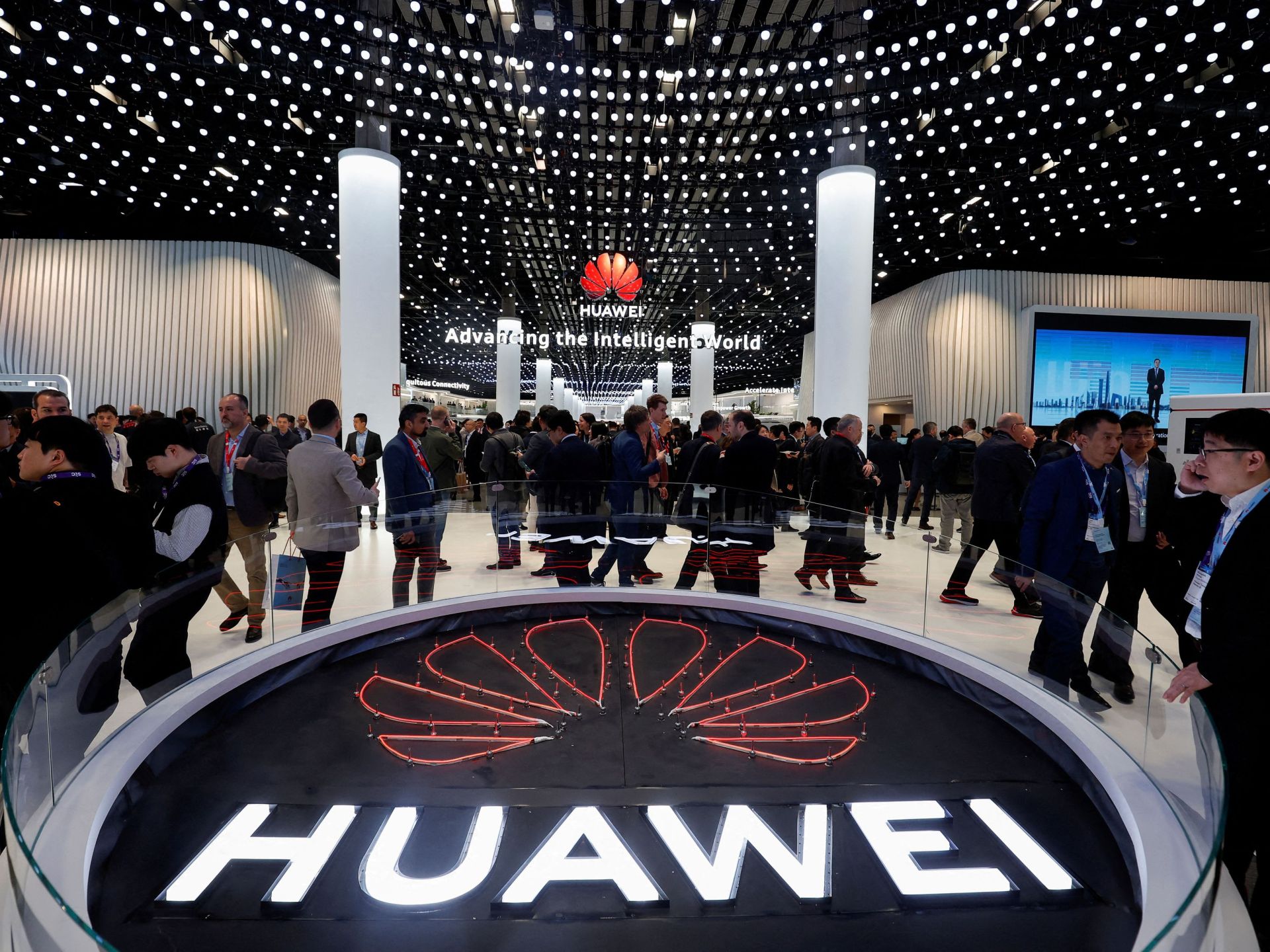The year 2023 is the third consecutive year of growth for Huawei (Reuters)
The Chinese company Huawei Technologies recorded its fastest growth in 4 years in 2023, amid a recovery in the consumer sector and income from new businesses such as smart car components, which accelerated its recovery from US sanctions.
Revenues in 2013 rose 9.63% from the previous year to 704.2 billion yuan ($97.48 billion), with the consumer business contributing significantly to this figure by growing 17.3% to 251.49 billion yuan ($35 billion).
In 2019, the United States imposed restrictions on Huawei's access to American technology, and accused the company of posing a security threat, which Huawei denies.
Last year was the company's third consecutive year of growth after revenues fell by about a third in 2021 when the company began to exhaust its chip reserves, but revenues are still lower than its peak recorded in 2020 of 891.3 billion yuan ($123 billion).
In a press statement, the company's rotating president, Ken Ho, said that the results were in line with expectations. “We went through a lot over the past few years,” he said. “But we overcame one challenge after another, and we were able to grow.”
Net profit in 2023 increased by 144.5% to 87 billion yuan ($12 billion).
Huawei's smart car software and components segment, which began about 4 years ago, also witnessed significant growth, albeit due to a lower comparison basis, with an increase of 128.1% year-on-year to 4.7 billion yuan ($651 million).
Part of the significant growth achieved by Huawei is attributed to the revival of its business in competition with the iPhone produced by the American giant Apple, and the rise of its cloud sector in front of Alibaba, according to Bloomberg.
There is a chip war between China and America (Al Jazeera)
Huawei offers
The latest results confirm the progress of Huawei, which the United States has imposed sanctions and export restrictions on for years, in continuing its path amid the challenges.
Huawei's phone raised concerns about progress in ultraviolet technology about two years ago, when it filed a patent related to this technology.
It appears that the Kirin 9000S chip in the new Huawei phone uses what is called the “7nm” processing node, which is a measure of how small the size of the chip’s circuits is and thus its power.
Current US sanctions prohibit China from importing manufacturing equipment for process nodes smaller than 14 nanometers, a technology that was considered cutting-edge in 2015.
Source: Agencies

